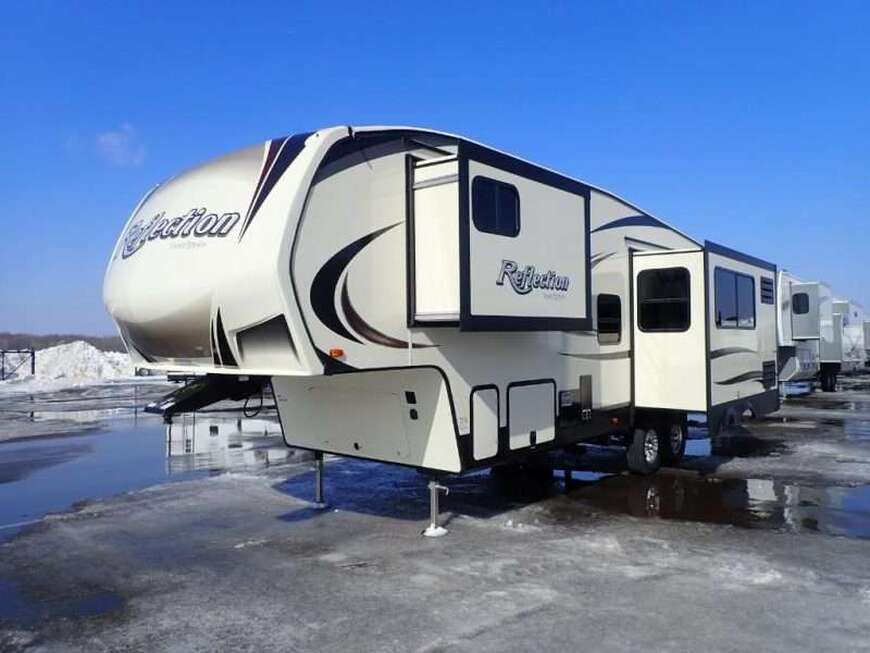 RV ownership is a lifestyle for some and a dream for many others, but there are a lot of myths about RVs and owning an RV that simply aren’t true. RV Myth #1: Model numbers always indicate the length of the RV. False. The vast majority of the time, this is not true. Although some brands have tried to incorporate the length of the RV into the model number, too many RVs are similar lengths so it doesn’t make sense for practical reasons. RV Myth #2: If I have a truck, I can basically tow any RV. False! Each vehicle has a tow rating (or Gross Vehicle Weight Rating) that indicates how much weight you can pull behind your truck. The GVWR is set by the vehicle manufacturer. If you tow beyond your maximum tow rating, you are putting yourself, the vehicle, and other travelers at risk. Even similar models can have different GVWRs based on which tow or trim package you choose. That’s why it’s critical to know your exact vehicle and confirm its towing capabilities before you choose an RV. With fifth wheel RVs, the other factor to consider is your vehicle’s payload capacity, or the total cargo weight that you can safely add in addition to your truck’s empty weight (or curb weight). Vehicle manufacturers typically note this information in the driver’s doorjamb, but if you don’t have one, you can calculate your truck’s payload capacity by taking the GVWR and subtracting the curb weight. The result is your payload capacity! RV Myth #3: If I buy a “four seasons” camper, I can camp and stay warm all winter long. While we wish this RV ownership myth was true, it’s false. There is no RV that will stay warm enough if you’re in a location that routinely spends multiple days below freezing. Even with extra insulation, an RV will still get very cold inside during extended periods of freezing temperatures. Water lines may also be at risk of freezing, bursting, and causing damage which is why it’s important to winterize your RV. RV Myth #4: Units with a “Polar Package” have added insulation and can be used for camping in year-round in arctic climates. Like the previous RV myth, this one is also false – whether it’s called a “Polar Package” or “Arctic Package” or something else. The truth is no RV is designed to be used continuously in sub-freezing weather. At best, you can expect an added insulation package to extended your camping season for a few extra months in select climates. For example, Michigan winters are regularly in the single digits so camping here in January could result in damage to your RV. Alternatively, camping in Alabama during the same month might be possible, if the weather doesn’t experience any huge swings out of their normally mild climate. Of course, you should always refer to your RV manufacturers’ recommendations before camping in any extreme environment. RV Myth #5: Generators with very few hours on them are an added value when buying used. False. Not using generators for prolonged periods of time actually causes them to wear out more quickly. This is because lack of ‘exercise’ for a generator can cause moisture build-up and fuel system degradation that make the generator run poorly. According to the generator manufacturer, Cummins, it only takes 30 days of sitting idle before the fuel in a gasoline-powered generator begins to gum and varnish the fuel system. This results in hard starting and surging. If you find yourself in need of a new generator or generator accessories, check out a reputable RV parts dealer first. They can recommend the right product for your needs. RV Myth #6: Motorhomes get terrible gas mileage. Semi-false. Gas mileage in today’s motorhomes is much better than people think. While motorhomes won’t be as fuel efficient as the average passenger vehicle simply due to their greater weight, there have been a lot advancements made in just the last few years that has equated to better mileage. And, manufacturers are aware of customer preferences so they continue to improve fuel efficiency. If you’re considering owning an RV and looking for more fuel efficient options, check out Class C RVs and B-Vans. They’ll get better gas mileage than a larger motorhome. RV Myth #7: I’ll need to get a special license if I buy a large enough motorhome or trailer. This RV myth is false. No motorhome or trailer that we sell requires any type of special driver’s license in the United States. However, laws and regulations may vary elsewhere. So if you plan on taking your RV out of the country, do your research first. Canada in particular is a very popular destination for RVers. Want to go there? Then start here. RV Myth #8: If an RV is not branded as “ultra-light” then it is not very light. Not true. In fact, many models that do not have “ultra-light” (or “ultralite” if you prefer) in their name are still just as easy to tow. RV Myth #9: My truck has factory-installed sway control. I don’t need any added sway control or stabilizers. Not only is this myth false, it’s downright dangerous. While a factory-installed sway control on a truck may ensure that the vehicle does not sway, it certainly will not prevent a trailer from doing so. RV Myth #10: I don’t need to store my RV in the winter months. False. Leaving your RV exposed to the elements can result in long term damage. This can be accelerated by moisture and cold so we recommend storage. Remember, owning an RV is an investment, and you’ll want to protect it as best as possible. https://www.generalrv.com/blog/rving-101-misconceptions-owning-rv/
7 Comments
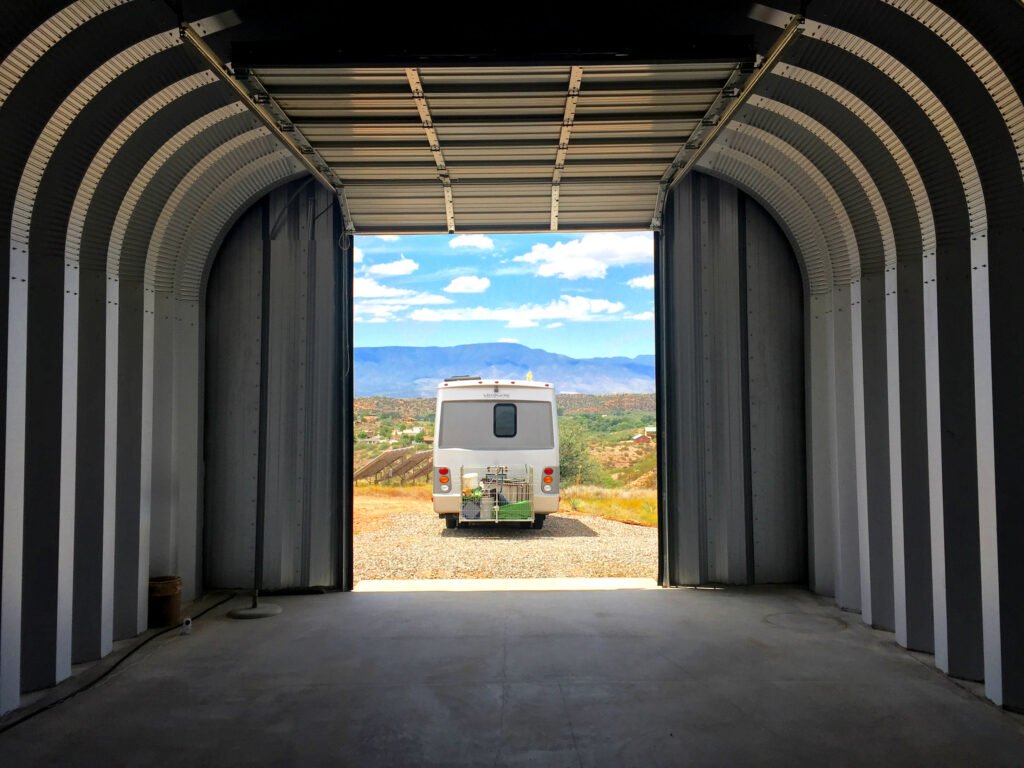 I saw a “staycation” ad on the TV today which brought back memories of both the Great Recession along with 9/11 and how people dealt with the aftermath of those two disturbing times in our country and abroad. As I pondered the advertisement and the knowledge that the current COVID-19 outbreak will eventually pass, I began to think about what the post public response was to both those events and how the RV industry will most likely be the preferred mode of vacation travel in the months to come. Here are 8 reasons why I believe the RV lifestyle will be widely embraced post-COVID-19. 1. Just like we witnessed after 9/11, people may be reluctant to return to the confined space of an airplane after practicing the safety of social distancing for so long and opt for RV travel instead. 2. People that may have planned to take a cruise are likely to opt for an RV vacation as an alternative as they will not be confined to a small enclosed space with thousands of others where the virus may still be lurking. 3. The thought of traveling abroad to foreign countries may still be a concern for many. 4. Traveling by RV allows people to prepare their own meals consuming them in their own space or outdoors, not in restaurants where they were banned from during the outbreak. 5. You can camp out in the boondocks where you don’t have to interact with others during the check-in process, touch hard surfaces like water faucets and electrical hookups, and minimize the risk of encountering any lingering virus. 6. Sleeping in your own bed every night and using your own bathroom is always preferred over the alternatives, especially after an infectious outbreak when you questioned every surface you came in contact with. 7. RVs lend themselves to outdoor activities where crowds are nonexistent like hiking, biking, fishing, geocaching, photography, off-roading, rockhounding, exploring back roads, kayaking, etc. 8. You know when the interior of the RV was last sanitized and by who (you)! There are potentially many more reasons that haven’t come to light yet but are likely to emerge as this crisis passes. In the meantime, feel free to share the reasons you are likely to RV after COVID-19 and the adventures in RVing you have planned. https://www.generalrv.com/blog/rving-101-rv-terms-definitions/ 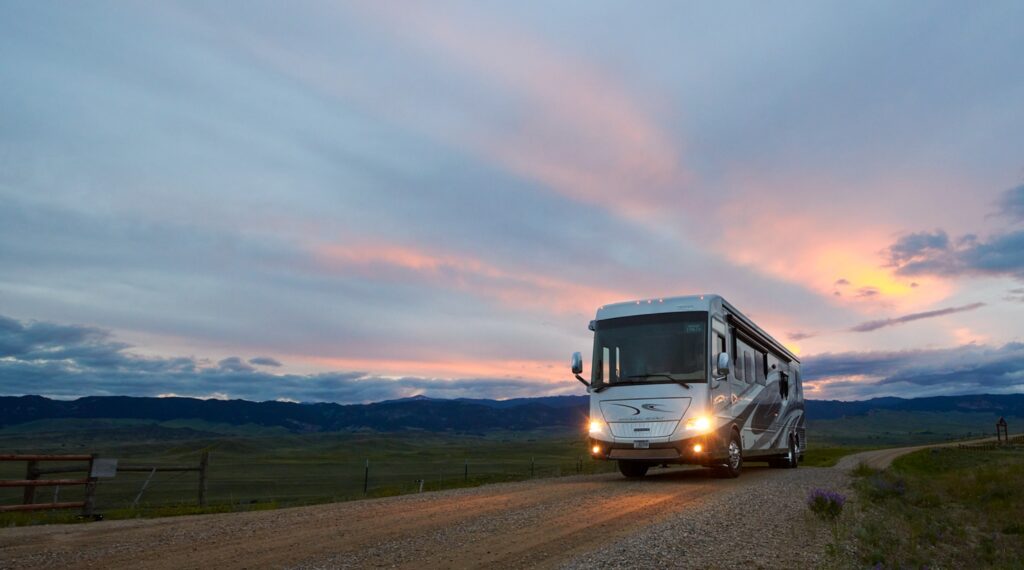 As COVID-19 seemingly begins to wind down and the clutches the coronavirus has on our lives start to loosen, it’s evident that RVs are about to take over the world. There seems to be a palpable, measurable pulse that’s rising in the RV community. With over 2.2 million RVs sold in the last five years alone and tens of millions more on the road already, the anticipation has risen to a fever pitch. Camp Corona looks to finally be closing and real RVing may actually begin. That pulse is rising with excitement however, not chaos. While scenarios playing out in the daily news picture cooped up quarantiners shouting Let Our Beaches Go! and We Need Haircuts, RV owners have been carefully biding their time watching YouTube videos about RVing and learning about RV maintenance and upgrades in anticipation of release day. You’ll find these laid-back RVing refugees checking on campground closures and more importantly, reopenings. Facebook is awash with new RVers yet to try their new camper or motorhome, save for brief driveway camping stint to learn about the features of their new toy. Driveway camping is not just for the newly initiated either. Veteran RVers can be found across the country setting up their driveway camps with the efficiency of an Indy pit crew, ensuring they are ready when their corner of the world reopens. As daily news reports outline which businesses and government entities will reopen, RVers flock to online sources to confirm the latest information and gobble up any available campsites that may have opened up. Like digital locusts, RVers are swarming top campground sites like Campground Reviews in hopes to locate an open campground near them. A recent campground in Pennsylvania booked all 155 campsites just three hours after being allowed to open again. It’s not just campgrounds either. RV dealers are expecting a deluge of purchasing and service requests while biding their time with online chats, Zoom meetings, and video walk-throughs in preparation for that moment when they can reopen their doors. It seems RVing is and will be for the near future, the best alternative to traditional vacation options. Throughout the RV industry, prudent optimism is providing the background noise to an escalating buzz that is starting to permeate all aspects of the RVing community. Few Americans are interested in getting on a cruise ship, and traveling abroad holds little appeal, much to the dismay of Expedia and the airlines. Standard road trips might still entice those looking for adventure, but finding a pandemic-free hotel room and safe restaurants will be a concern to those who just spent two months locked in their own homes and are unwilling to risk exposure again. That leaves the wonderful, magical world of RVing. Yes, there will still be the occasional Robin Williams moment with your RV. At the end of the day, however, it will be you and your family in an RV that is yours, knowing where it’s been and who has been in it. You’ll sleep in your own bed every night, knowing who put the sheets on and when they were last washed. You’ll know who cooked your meals and where the food came from. You can spend time outdoors, burning off that pent-up summertime energy. Kids that have routinely been up past midnight playing Animal Crossing on their Nintendo Switch, will now be exhausted and asleep by 9:00 pm, leaving some quiet campfire time for the parents. Whether you visit that national monument you’ve always wanted to see, or simply take your crew to a family-oriented RV park that has every activity imaginable, you can vacation on your terms. Perhaps you just want to hit the road with no real destination in mind. Plan a trip, find campgrounds, and drive. Go RVing, the allure of the open road is real. When your RV vacation is over, you’ll have more than just great memories, you’ll still have that RV. Just clean it up and get ready for your next adventure. You thought lather, rinse, repeat was just for shampoo? Get ready for it It’s coming. You can feel it. Spend any amount of time on social media or a popular RVing forum like iRV2 and you can feel the restlessness. Camping will start late this year, but it will have a long burn. RVers won’t be so quick to store their rig for the winter, and they won’t be quite so expeditious to winterize. Many will extend their camping season into the cold season. It may take years for vacation travel to return to normal—if it ever does. Expect RVing to build on the growth it has seen in the last several years and become the new vacation normal. RVs will continue to become more popular, more valuable, and have a higher resale value. It may not be quite the same as a chicken in every pot, but an RV on every lot is not out of the question. https://rvlife.com/rvs-world-covid/ Each year, retirees from all over the U.S and Canada venture to the Rio Grande Valley area to spend the winter. These retirees, known as Winter Texans, provide a substantial boost to the region’s economy. In an effort to better understand their activities, interests and impact on the region, the Business and Tourism Research Center in the Robert C. Vackar College of Business and Entrepreneurship at The University of Texas-Pan American and now The University of Texas Rio Grande Valley has conducted research on this market for 30 years.
This year’s study included 744 Winter Texans respondents and 63 RV and mobile home park manager/owner respondents. Winter Texan participants submitted survey responses at a Winter Texan Expo (15.5%), online (43%) or returned by mail a completed a hard copy version of the survey that was inserted in the Winter Texan Times newspaper (41.5%). The results of both the Winter Texan and the Park surveys are summarized here in seven sections: demographic characteristics and stay characteristics, expenditures in Mexico, expenditures in the Valley, Other winter destinations, Internet use and the Park study. Demographic Characteristics The average Winter Texan participating in this year’s study: • is female (57.2%), • is 72.3 years of age, • is married (84.6%), • is white (97%), • is retired (91.9%) and has been retired for more than a year (88.6%), • has at least some college (40.1%) or a bachelor’s, graduate or professional degree (32.8%), • is in a 2-person household (86.8%), • has an annual household income of $64,500 with 56.2% of Winter Texans having an income between $30,000 to $70,000, and • comes from Minnesota (16.3%), Canada (14.3%), Iowa (9.7%), Wisconsin (8.8%), Illinois (7.7%), Missouri (5.7%), Michigan (6.8%) and Nebraska (3.0%). Further, Winter Texans 65 years of age and older participating in this study are, on average, more educated and have a higher household income level than their counterparts in the U.S. population in general. There are fewer Winter Texans in the 65 to 69-year-old age range than in the U.S. population in general but more in the 70-years-of-age or older age range. Stay Characteristics Knowing where Winter Texans live while in the Valley, how long they stay, why they come and what they do while in the Valley is crucial to providing for their needs so they will continue to come and significantly impact the region’s economy. This is the first winter for 5.4% of study respondents; but overall during their stay in the Rio Grande Valley, the typical Winter Texan in this study: • has come to the Valley for 11.3 years, • stayed in the Valley for 133 days, • owns a Valley residence: ° 50.2% own a mobile home/park model ° 32.2% own an RV ° 5.0% own a house or condo As in past years, most Winter Texans come to the Valley because of: • the climate (80.8%), • cost of living (70.9%), • friendly people (60.8%), and • the social activities (48.1%) The most popular Valley activities for this year’s study participants include: • visiting flea markets • visiting historical sites • attending festivals • attending music or jam sessions • going to the beach • visiting wildlife/nature refuges Overwhelmingly, the Winter Texan study participants plan to return to the Valley next year (95.5%), suggesting their satisfaction with the area. They reported that poor health (59.3%) or family reasons (28.5%) would be the most likely reasons to prevent them from returning. Economic Impact Included in this year’s report is a study of RV and mobile home parks where most Winter Texans typically stay. Using a listing of parks and information from questionnaires completed by park managers or owners, an estimated 106,000 Winter Texans or 56,700 households were in the Valley during the 2017-2018 winter season. On average, Winter Texans visited Mexico (85.3%) for an average of 5.1 trips during their stay in the Valley. They spent an average of $104 to $151 per trip, depending on the method used for estimation. With about 56,700 Winter Texan households in the Valley, the average, direct economic impact of Winter Texans on Mexico border towns is about $32 million. On the U.S. side, Winter Texan households spent an average of approximately $6,257 on routine, monthly purchases and about $3,058 on major, one-time purchases. This represents an average expenditure in the Valley of about $9,314 per household. By multiplying this average household expenditure times the estimated 56,700 Winter Texan households in the Valley, this study estimates that Winter Texans spent about $528 million, in nominal dollars, while in the Valley in 2017-2018. https://www.utrgv.edu/tourism/_files/documents/reports/winter%20texan%20survey%20report%202017-18.pdf By Manny Fernandez in Donna, Tex.
Meet the part-time Texans It’s springtime on the border, and that means the winter season is winding down — the months when tens of thousands of retirees from Minnesota, South Dakota, Illinois and other parts of the Midwest adopt South Texas as their home away from home. Retirees in swimsuits ride their bicycles to the pool, bright noodles tucked under their arms like jousting lances. They line the streets for golf-cart parades. They venture into Mexico, shopping for cheap medicine, getting pedicures, undergoing low-cost dental work and sipping goblet-sized margaritas. They are known as Winter Texans, and they concentrate mainly in the Rio Grande Valley, the temperate region deep in South Texas that is also the place where the largest number of migrants has been crossing lately from Central America — President Trump has declared a national emergency along the border and stationed Army troops to help control the escalating influx. One of their base camps was a quarter-mile from where seniors at the Victoria Palms resort in Donna deploy by the dozens to occupy five pickleball courts. The annual invasion of Midwesterners — and a number of Canadians — has decreased in recent years, but they remain an economic and cultural force. An estimated 106,000 Winter Texans spent about $528 million in the valley in the 2017-18 winter season, according to a survey by the University of Texas Rio Grande Valley. Tex-Mex restaurants fly welcome banners for them. There are Winter Texan newspapers, age-qualified RV parks, expos, cruises, theater productions and bumper stickers — one pickup truck in the border city of McAllen had two: “Iowa Winter Texan” and “I’m retired. Go around.” “It gets me out of the snowbanks,” said Dean Miller, 58, a resident of Detroit Lakes, Minn., who spends the winter living and working at the Winter Ranch resort in Alamo. “You’ll go to some event down here and you’ll find your neighbor from back home.” The majority of Winter Texans are white and in their early 70s. Many of them voted for Mr. Trump in 2016, and their very presence this winter quietly subverted the president’s assertion that the border is in crisis. They have been coming to the region for years — in some cases, their parents were Winter Texans, too — and the political dynamics and national-emergency rhetoric has no effect on how, or where, they spend their retirement. “We don’t see what you see on TV,” said Terry Goss, the general manager of Victoria Palms, one of the largest Winter Texan communities, with up to 2,500 retirees. What do Winter Texans see, exactly? A slice of border life that looks nothing like what many Americans think of as border life. There was Nathan’s fourth annual Sock Hop at Ranchero Village in Weslaco one Friday. There were fish frys and riverboat tours, line dancing and karaoke sessions, bluegrass acoustic jams and nondenominational church services. At the Winter Ranch resort in Alamo one Monday afternoon, the Winter Ranch Players packed the house with three one-act plays, “The Ethel and Albert Comedies.” At Victoria Palms, Mr. Goss spoke standing next to a poster listing all the sold-out shows at the resort’s ballroom, one of them a Rolling Stones tribute band concert. Victoria Palms is so popular with Canadians that a Victoria Palms reunion is scheduled most summers near Toronto. Margaret Hitzemann, 63, who normally lives in Onamia, Minn., spent the past two months in a townhouse in Port Aransas, near Corpus Christi. One rainy afternoon, she and her husband visited the Mexican tourist town of Nuevo Progreso. They bought crispy chapulines — crickets, a fried delicacy — and went into a pharmacy to buy some cheap medicine. “We don’t take a lot of meds, so we were thinking, ‘Oh, let’s go down and get some cheap Tylenol and Advil and that kind of thing,’” Ms. Hitzemann said. “I was like, ‘Oh my gosh, this isn’t any cheaper than Walmart.’ So we ended up not buying any medications.” In a region with a large Latino population and tolerant attitudes toward immigration — many people have family members on both sides of the border — culture clash with the Northerners is inevitable. The study released by the University of Texas Rio Grande Valley included unedited messages from Winter Texans to local officials, and some of the sharpest comments read: “Be more American, less Mexican. This is not Mexico!” and “Have channel 5 respect Mr. Trump” and “Keep the grass cut, the trash picked up and speak English.” Already, the exodus back north has started. The end of the season for many comes on Thursday, with the annual Winter Texan appreciation day in Nuevo Progreso. For some, the season never ends. There are Converted Texans, former Winter Texans who settle in the valley for good. Kristi Collier, a McAllen native who runs a media and hospitality company that caters to Winter Texans called Welcome Home, Rio Grande Valley, hosts an annual Converted Texan Fiesta in April. (She leads a swearing-in ceremony.) Among the ranks of the converted are Ken and Lois Lane, originally from Anchorage, who started spending winters at Victoria Palms in 2005. They now live there permanently in a double-wide mobile home. “I think the cost of living here is very reasonable, compared to many other places,” said Mr. Lane, 73, a retired power dispatcher for an electrical company. He and his wife visited Nuevo Progreso and hosted their son and his family from Iowa over spring break. The couple is in a unique category: sort of reverse Winter Texans. “The motor home we kept and in the summer when it gets real hot, we go up north,” Mr. Lane said. https://www.nytimes.com/2019/03/21/us/winter-texas-border.html Often described as “Disneyland for adults”, The Villages near Ocala is a bustling hub with an almost endless selection of activities, restaurants, entertainment venues and more. Plus, it’s known as “Florida’s friendliest hometown”, so everywhere you go, you’ll be greeted with a smile.
Florida boasts many beautiful beaches, so for one to be known as a true stand-out – it must be good! Fort de Soto Park, in Tierra Verde, certainly is. In fact, it was voted the best family beach in the United States in 2014, and simply the best beach in the country in 2009.
One of the reasons that Fort de Soto Park is so popular is that it is much more than “just” a beach, with over 1,100 acres and many other activities to enjoy. Once you’ve had your fill of lazing on the powder white sand or swimming in the azure waters, there’s so much else to do – from kayaking to mountain biking. St. Petersburg’s Sunken Gardens first began welcoming visitors in the 1930s. Over eighty years later, visitors from near and far are still dropping by to experience the beautiful and relaxing garden for themselves.
If you are looking to enjoy some of Florida’s absolute best seafood dishes in a warm and friendly setting, you’ve got to try Circles Waterfront in Apollo Beach. Plus, as the name suggests – it enjoys a fabulous location overlooking the beautiful Land’s End Marina.
“Circles” has been a much-loved part of the Florida restaurant scene since opening in 1998. Once described as “the town’s best kept secret” by the Florida Tribune, word has certainly spread about this gem – yet the restaurant has retained its laidback and friendly charm. It’s not only the great service that sets Circles Waterfront apart, but also its genuine commitment to serving only exceptional food. The RV Tradeshow at Florida Fairgrounds is by far the biggest and best event in the U.S to nab a new luxury RV (and an RV resort stay to bring it to of course.) It’s $10 to get in, and being on the Fairgrounds, the tradeshow takes on a festive ambiance. Trollies, food stands, even jugglers and comedians! The RV Supershow is a great day-event to check out, even if you’re just browsing. |
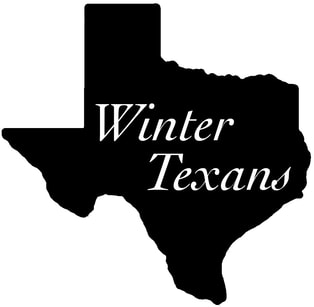

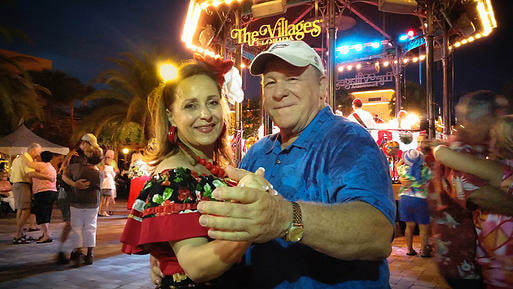



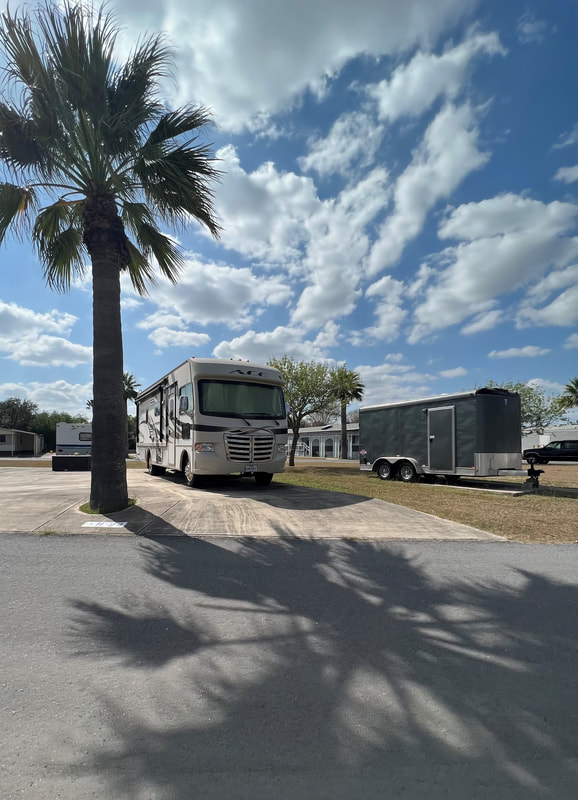
 RSS Feed
RSS Feed